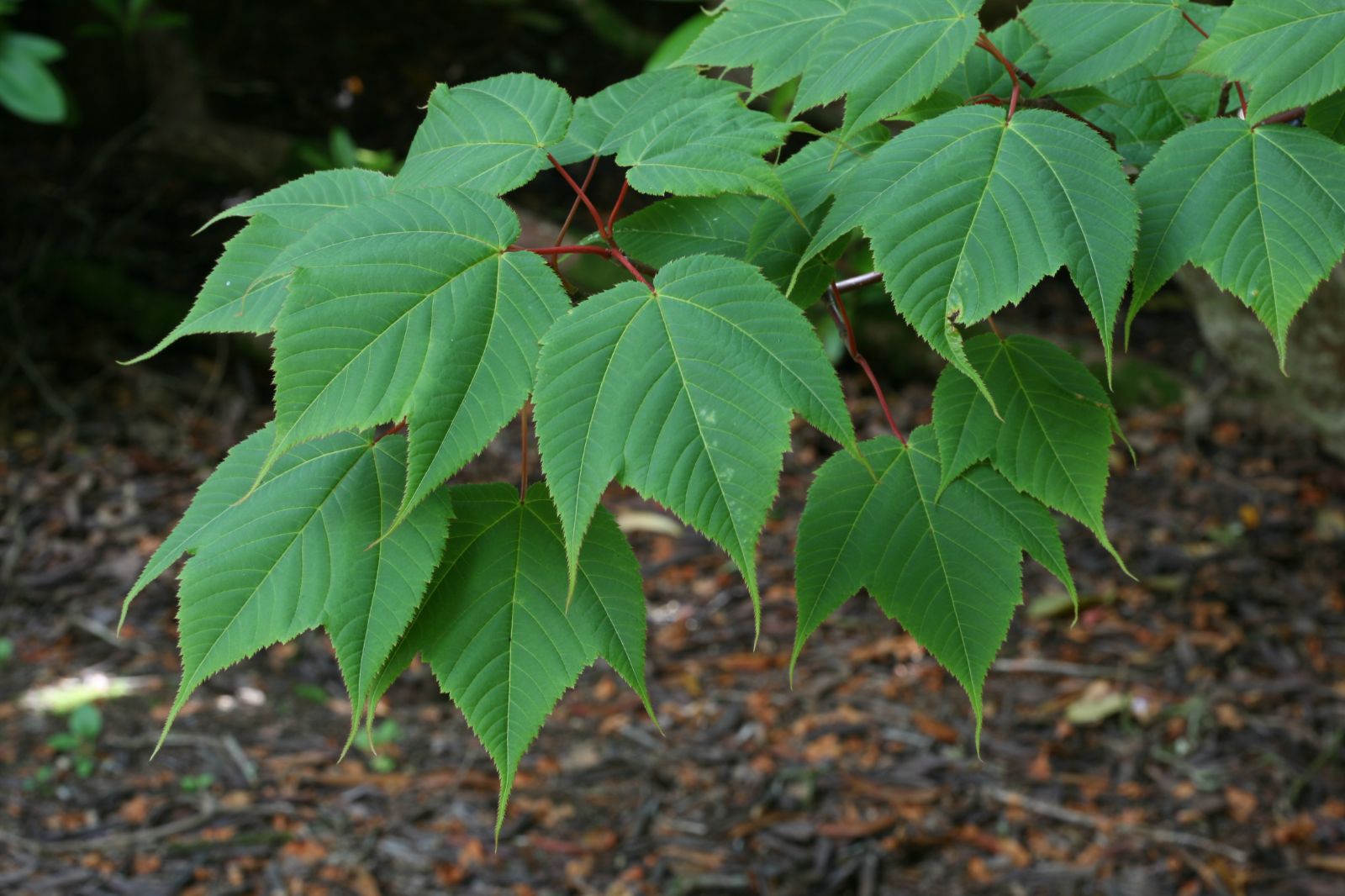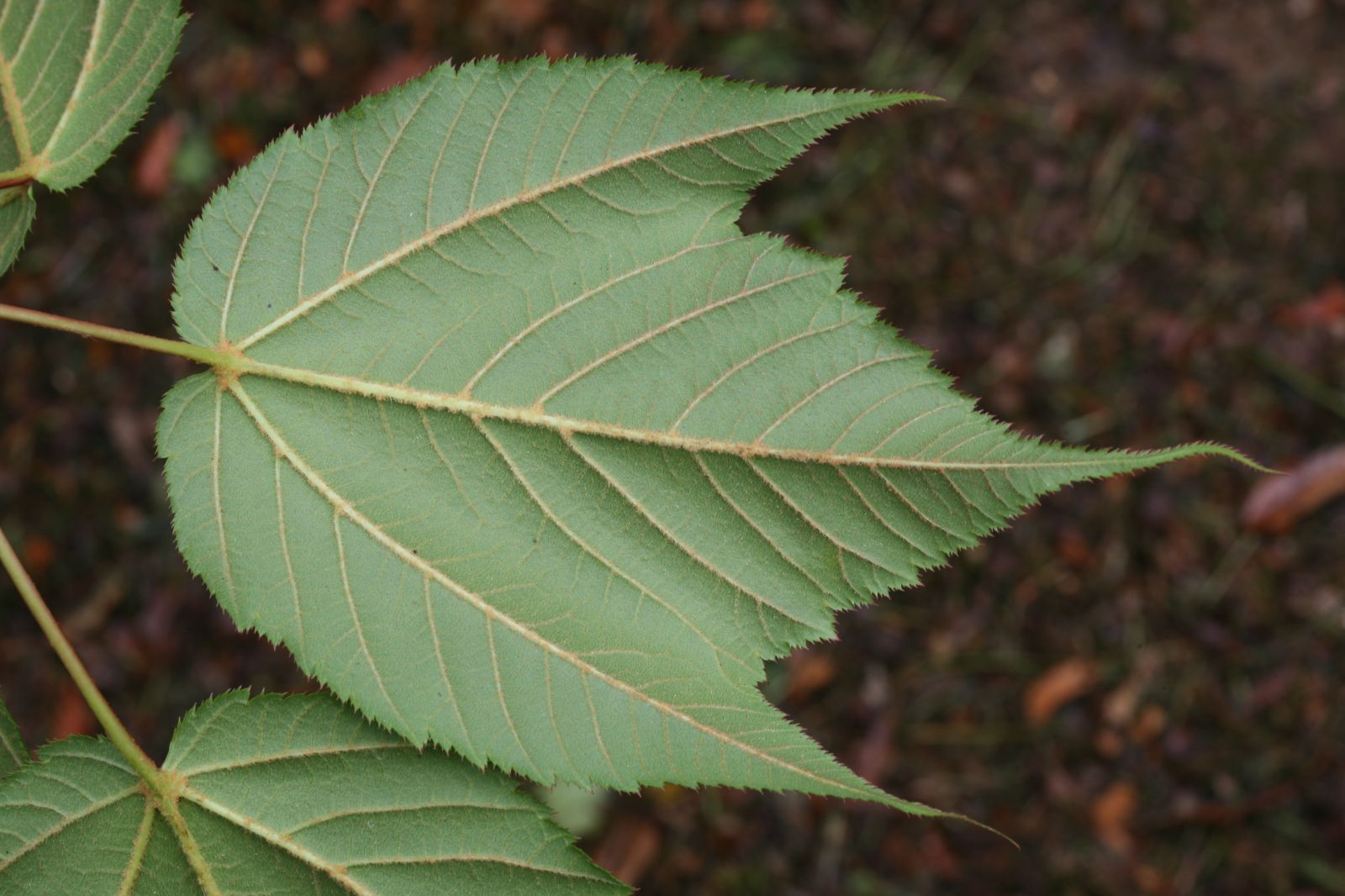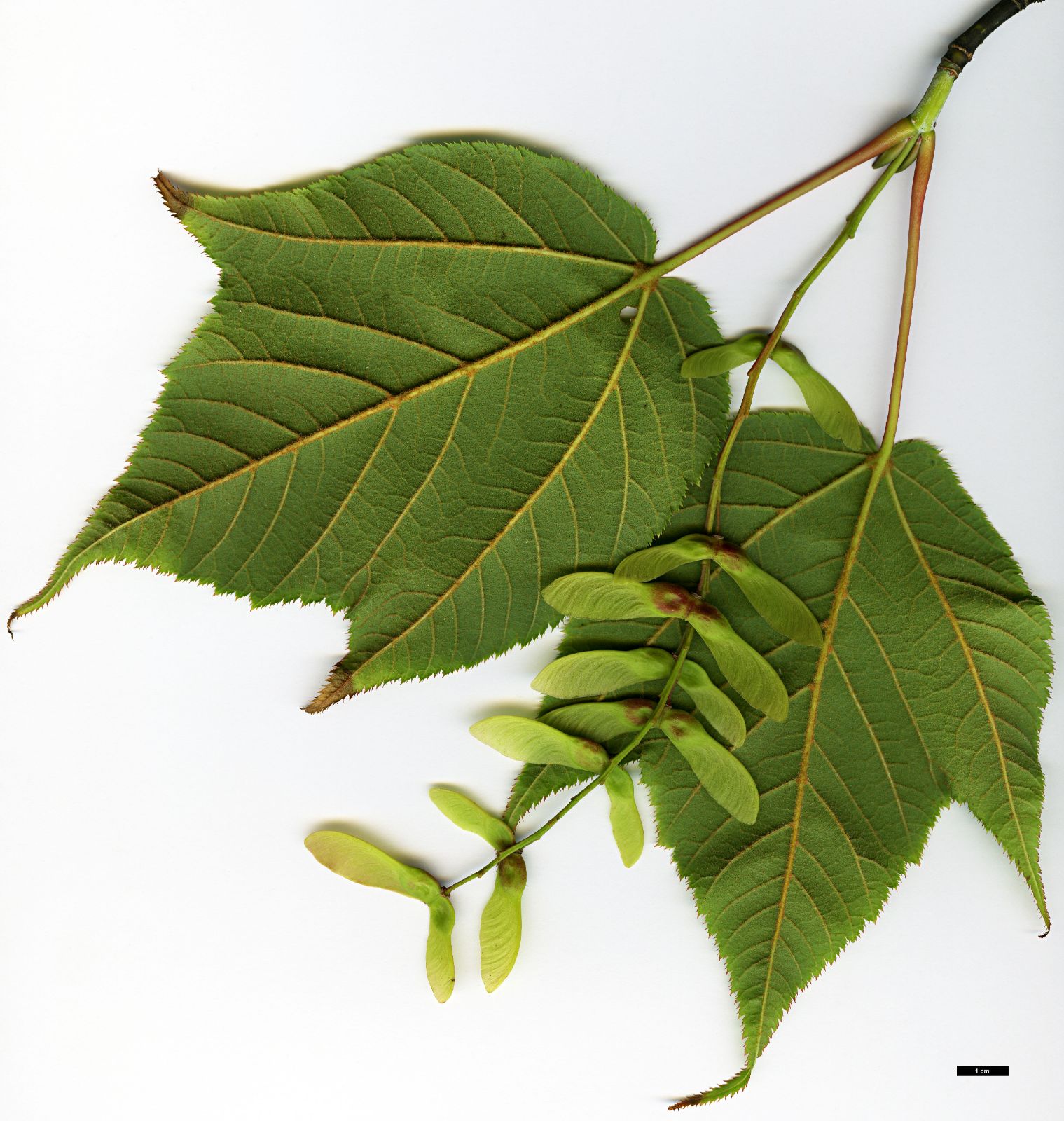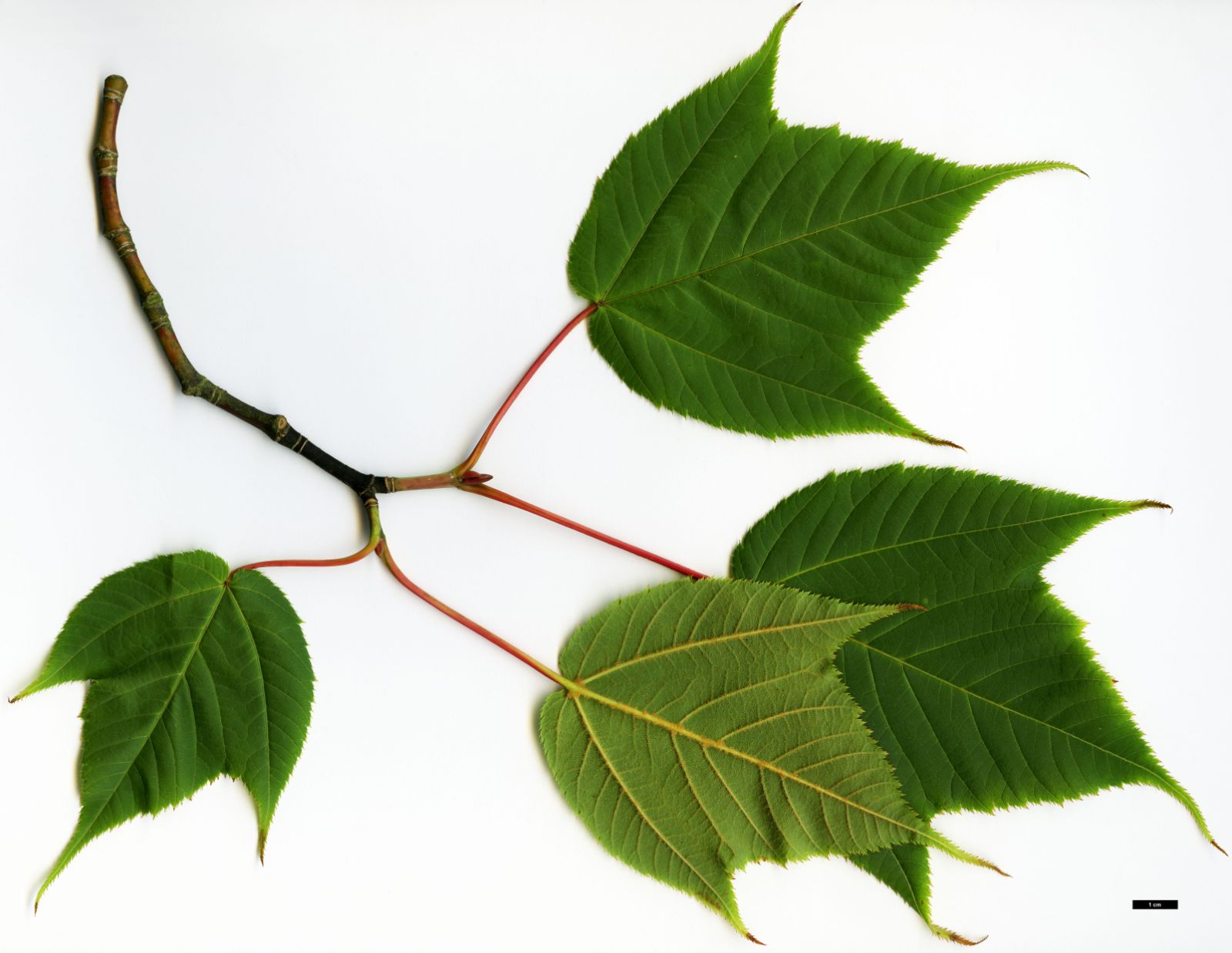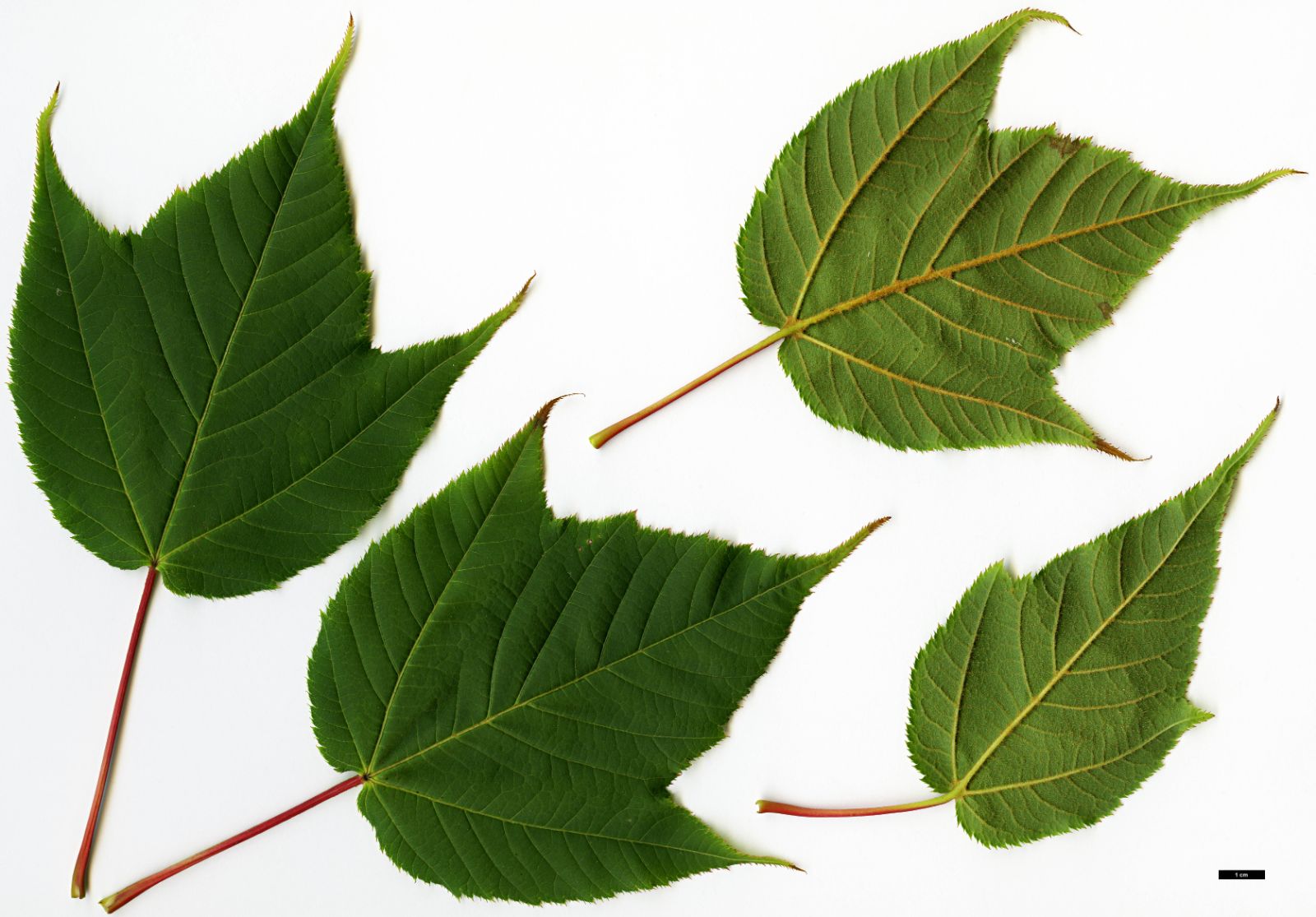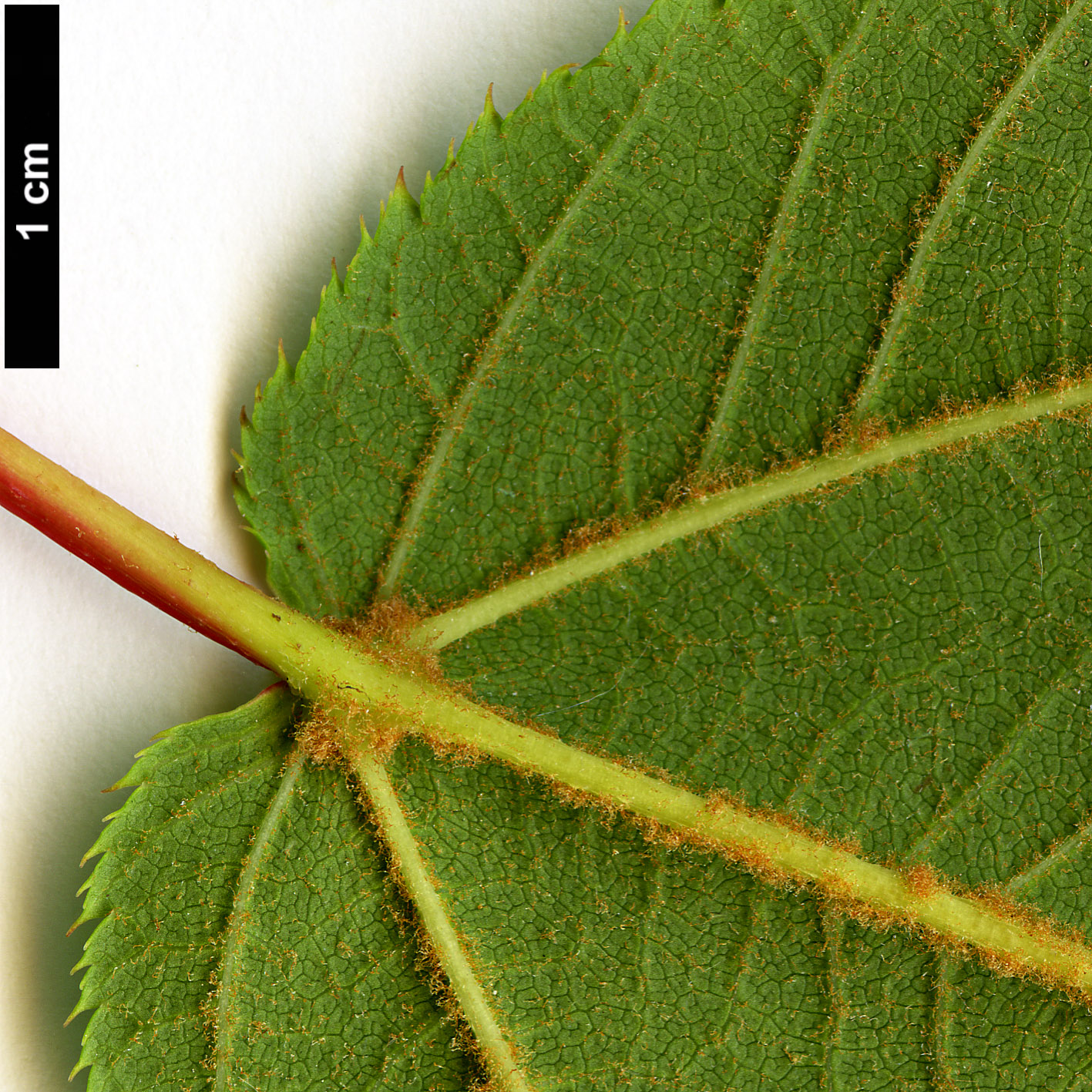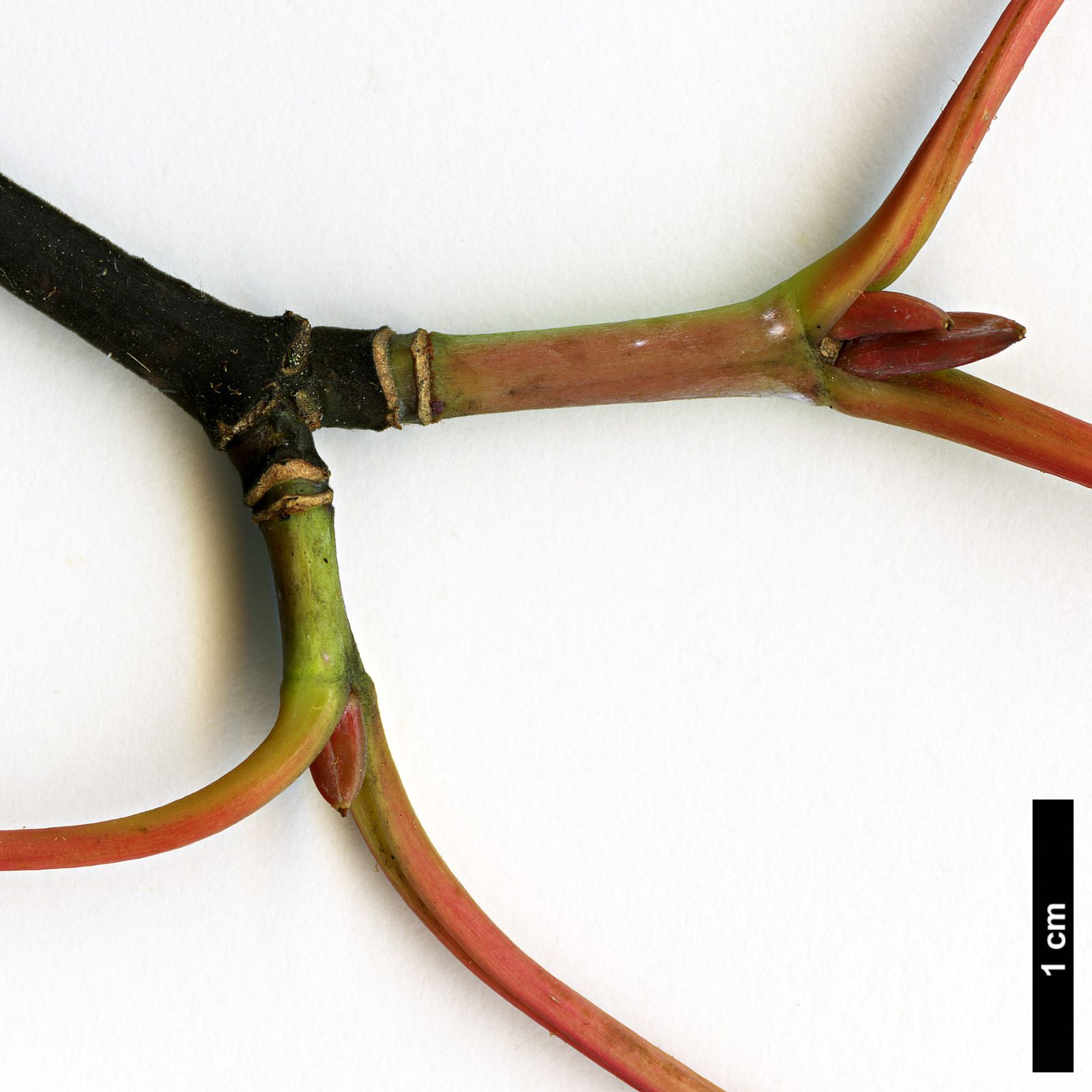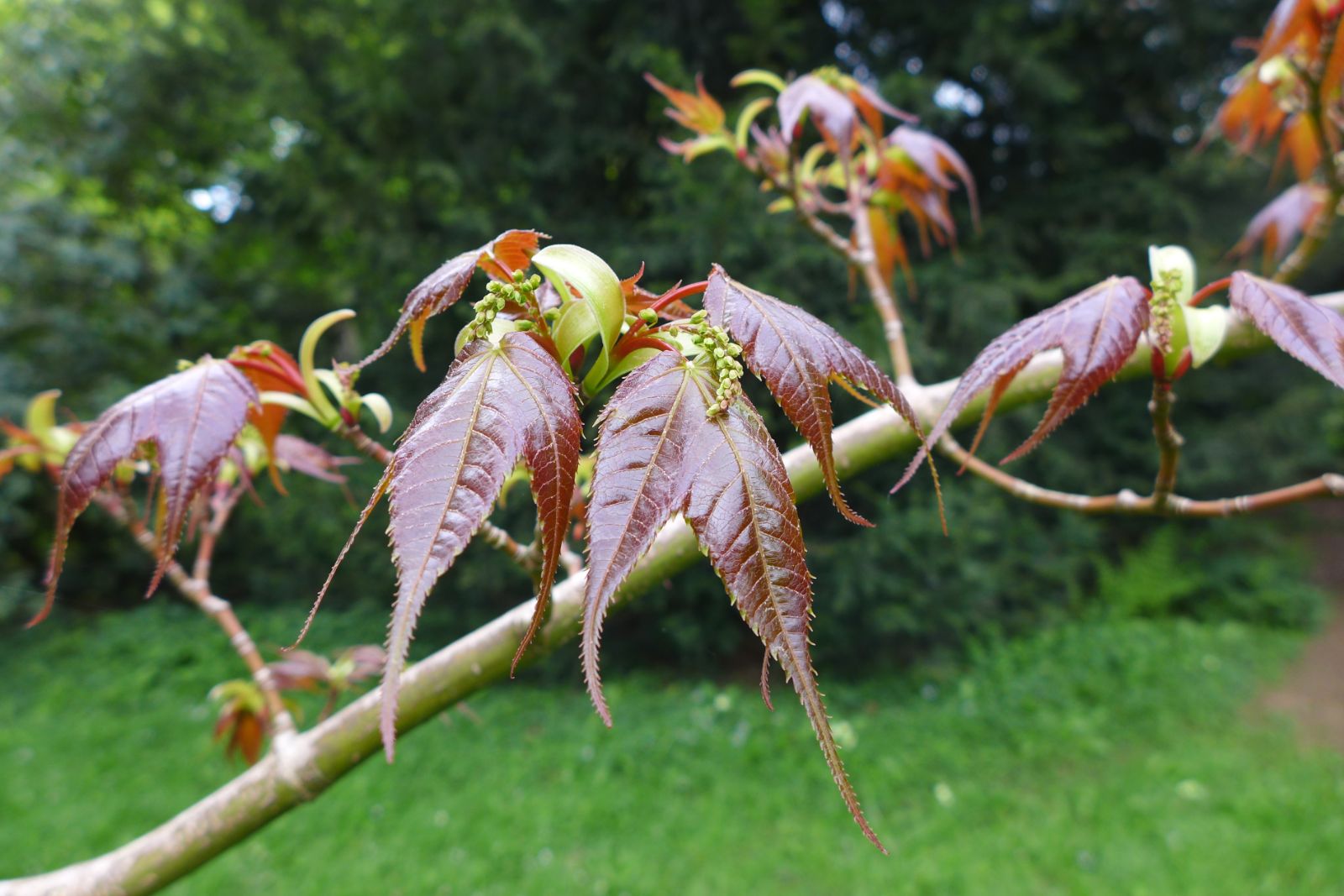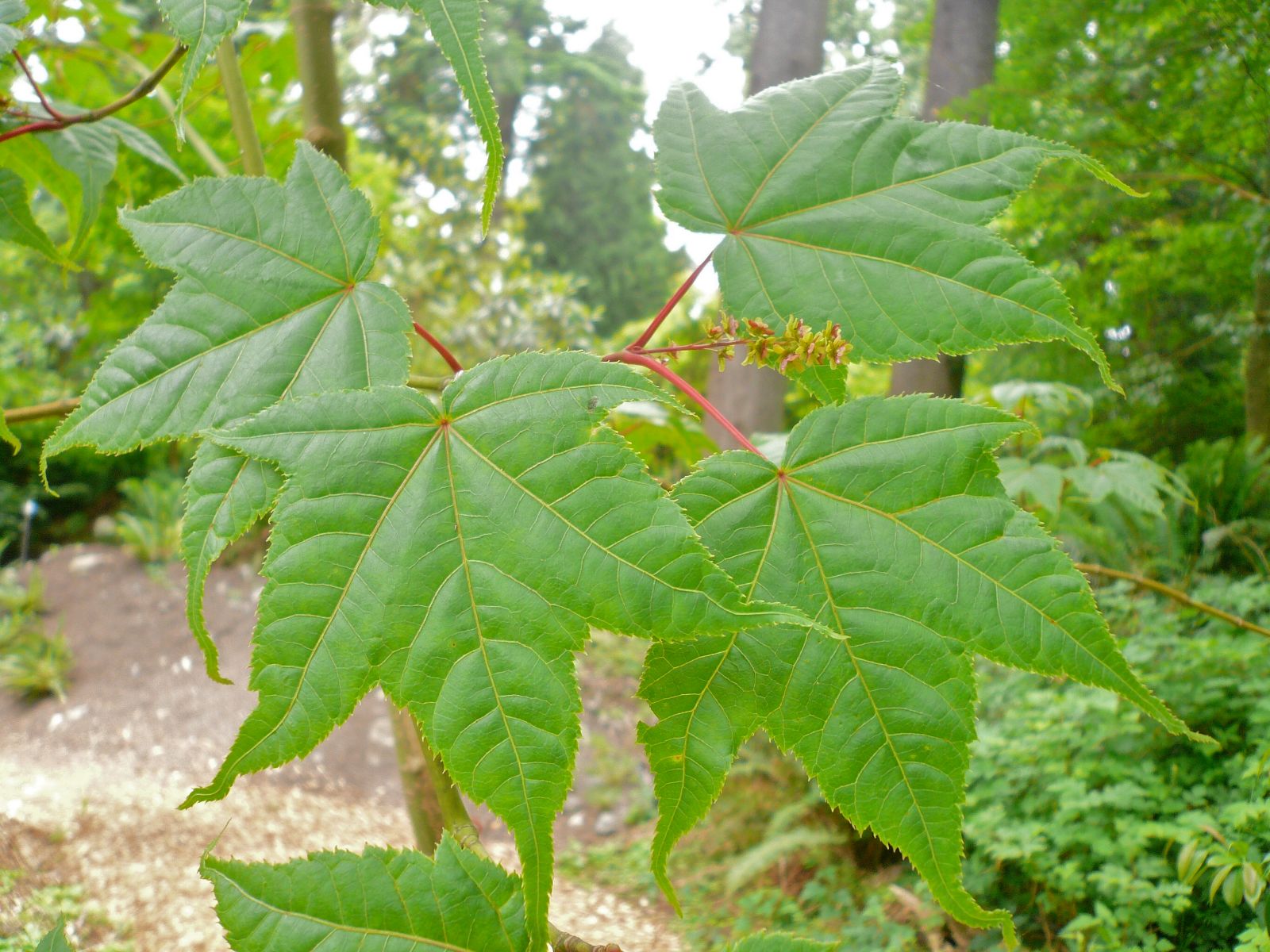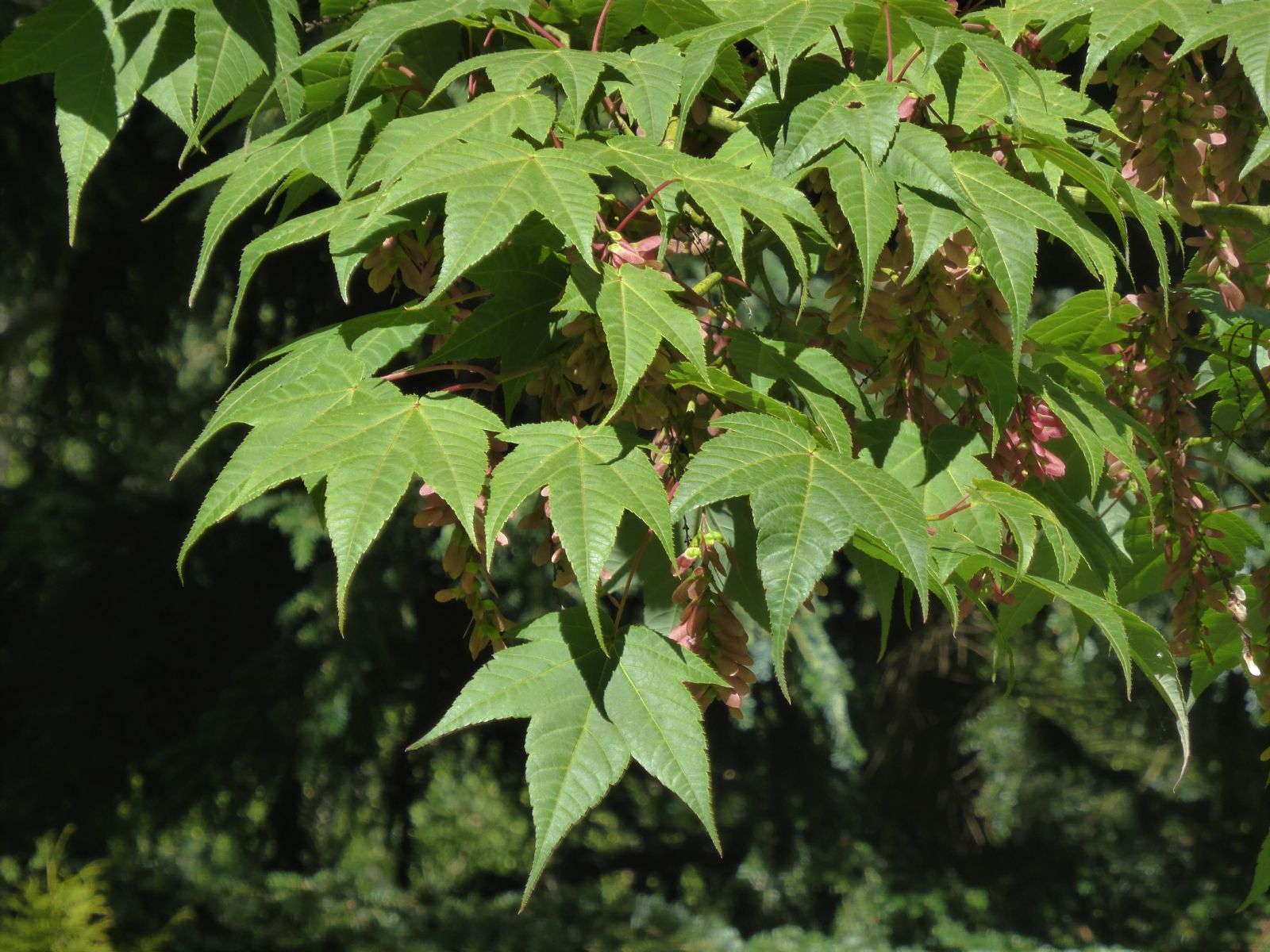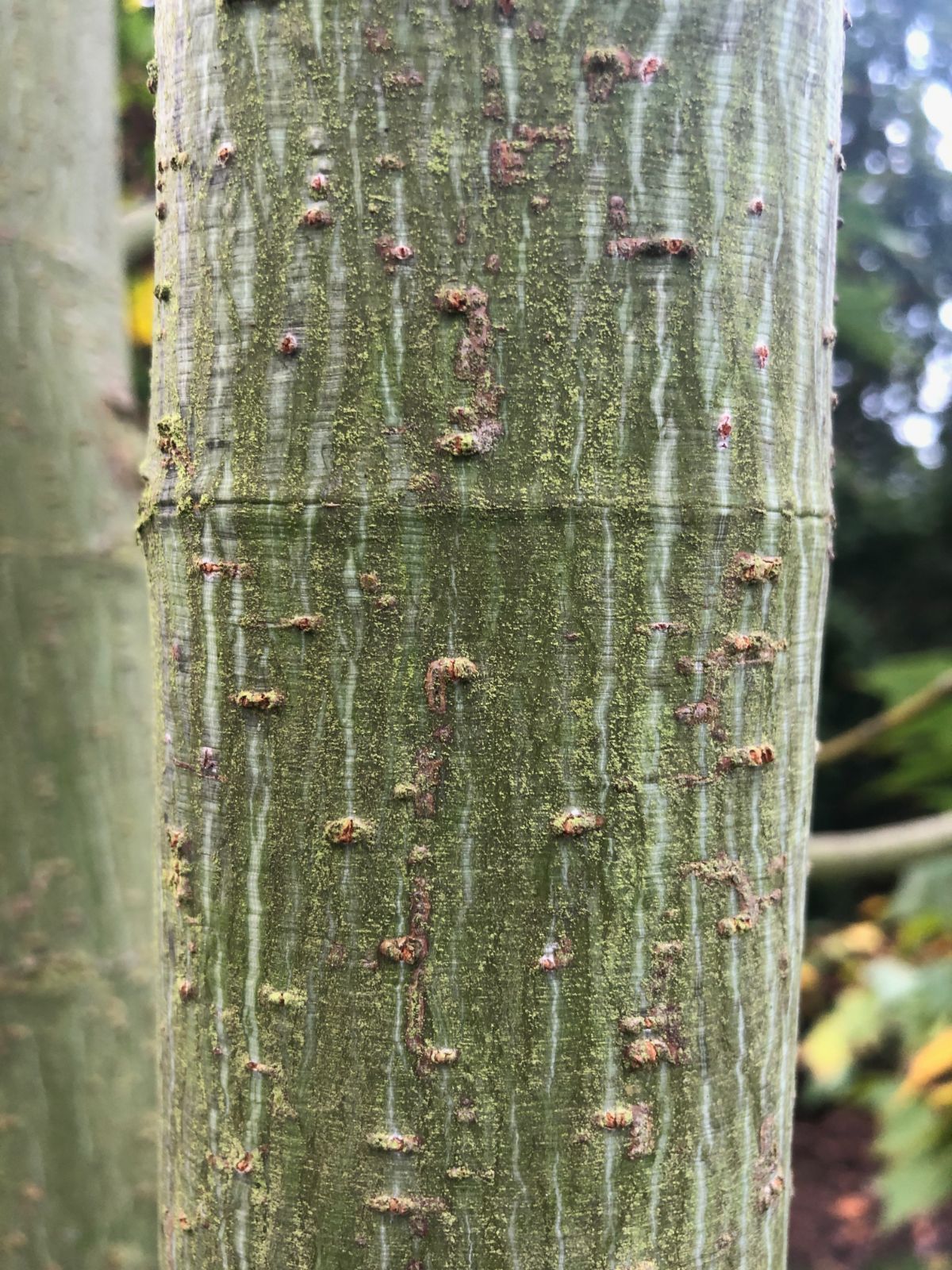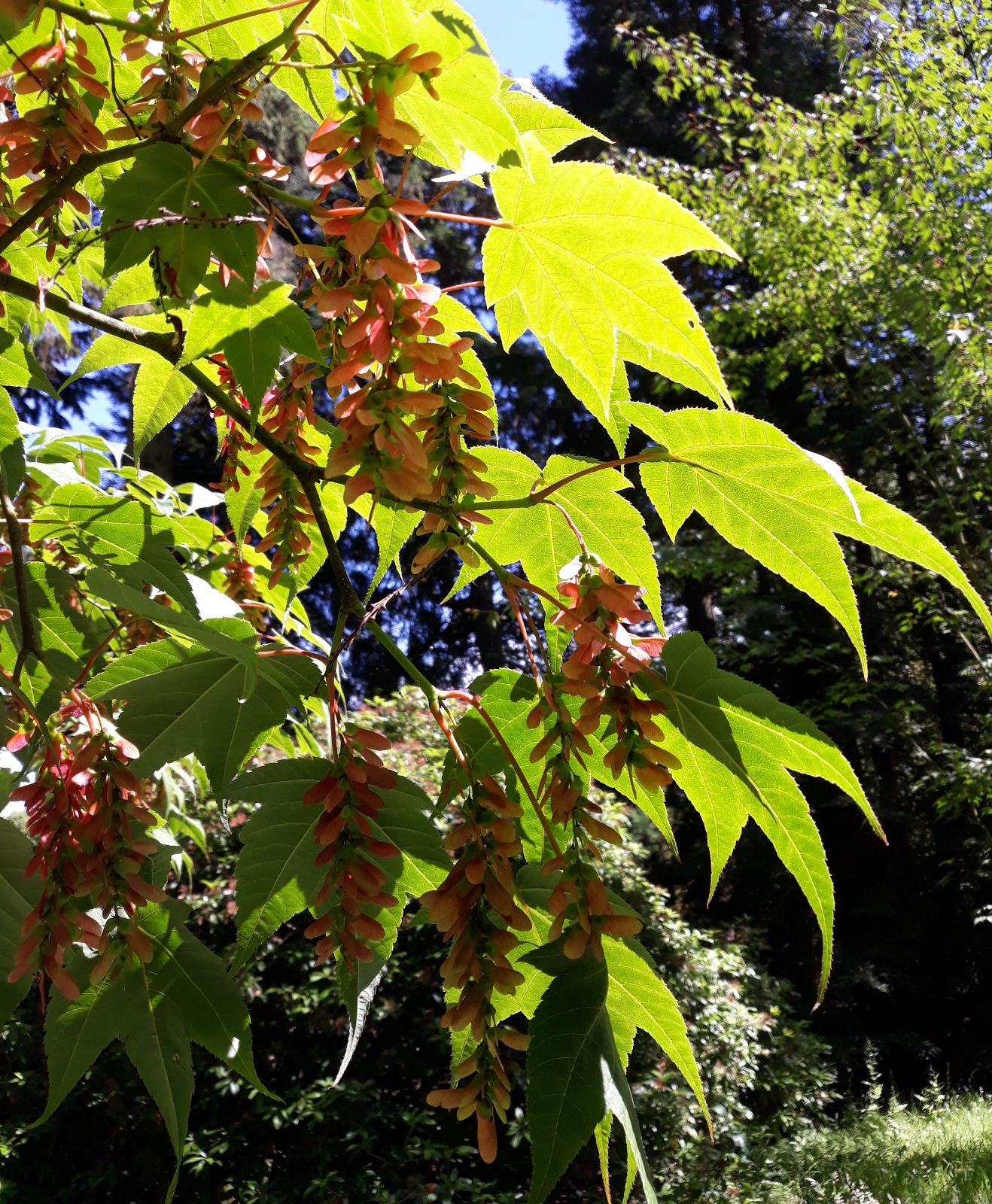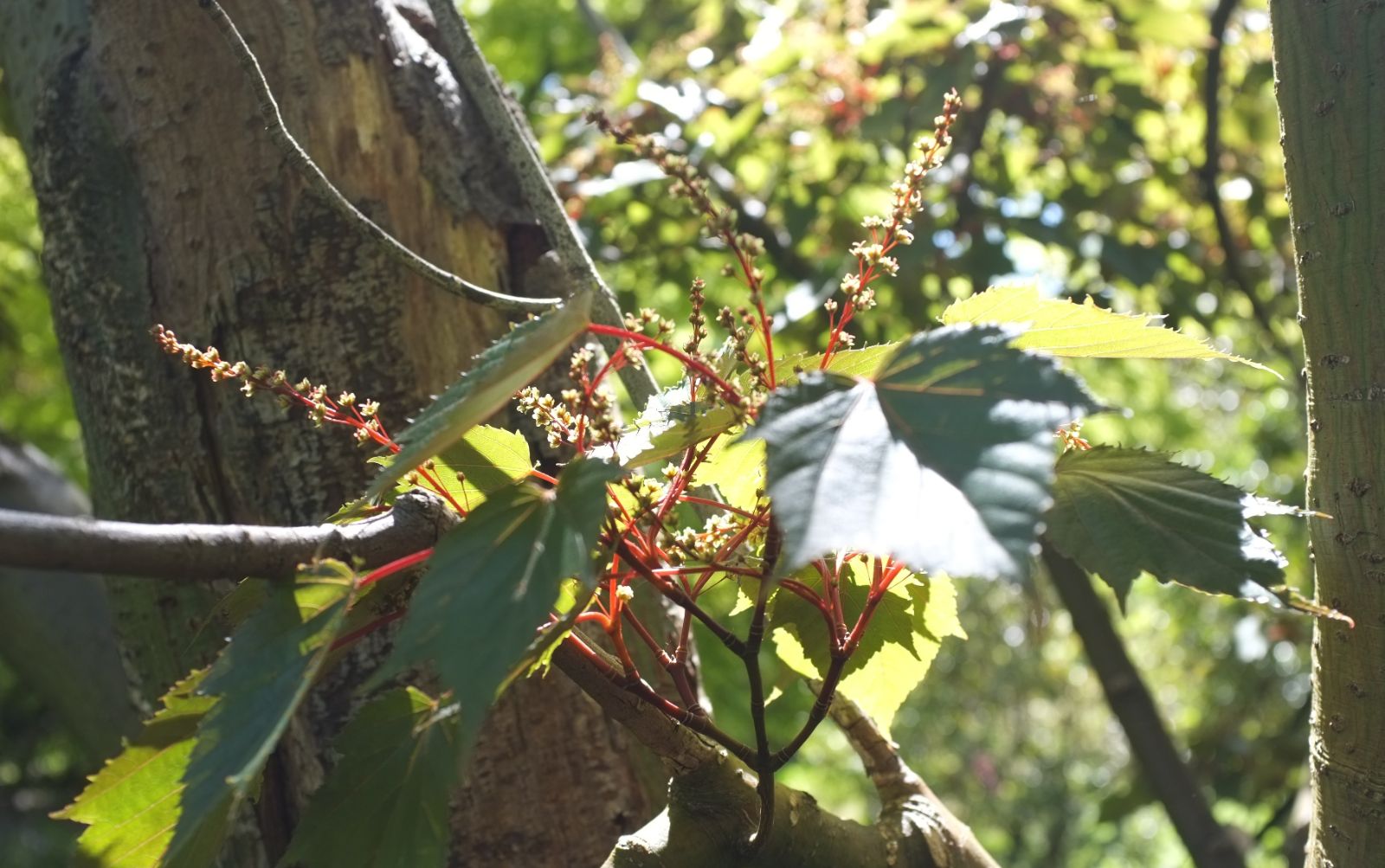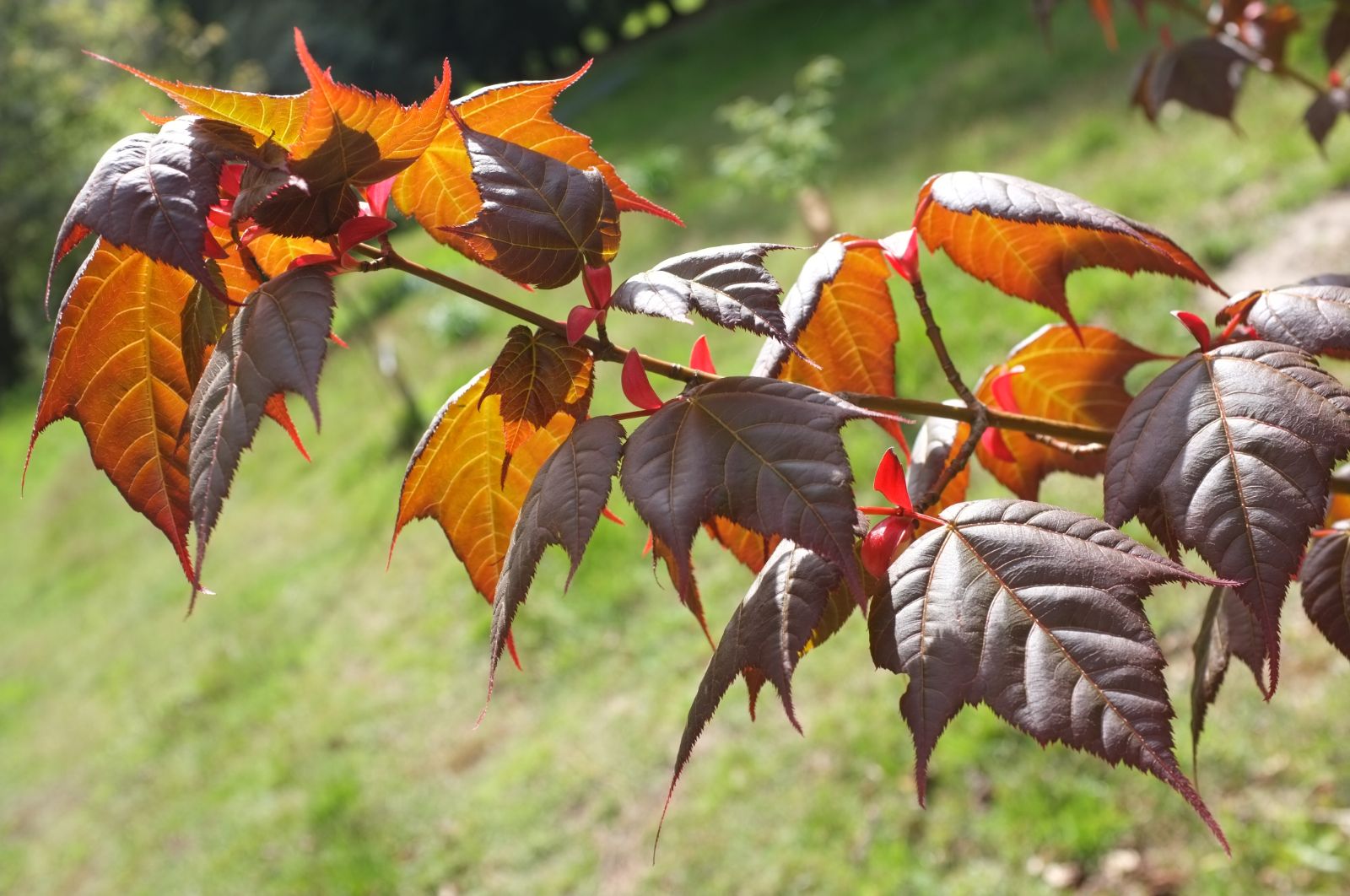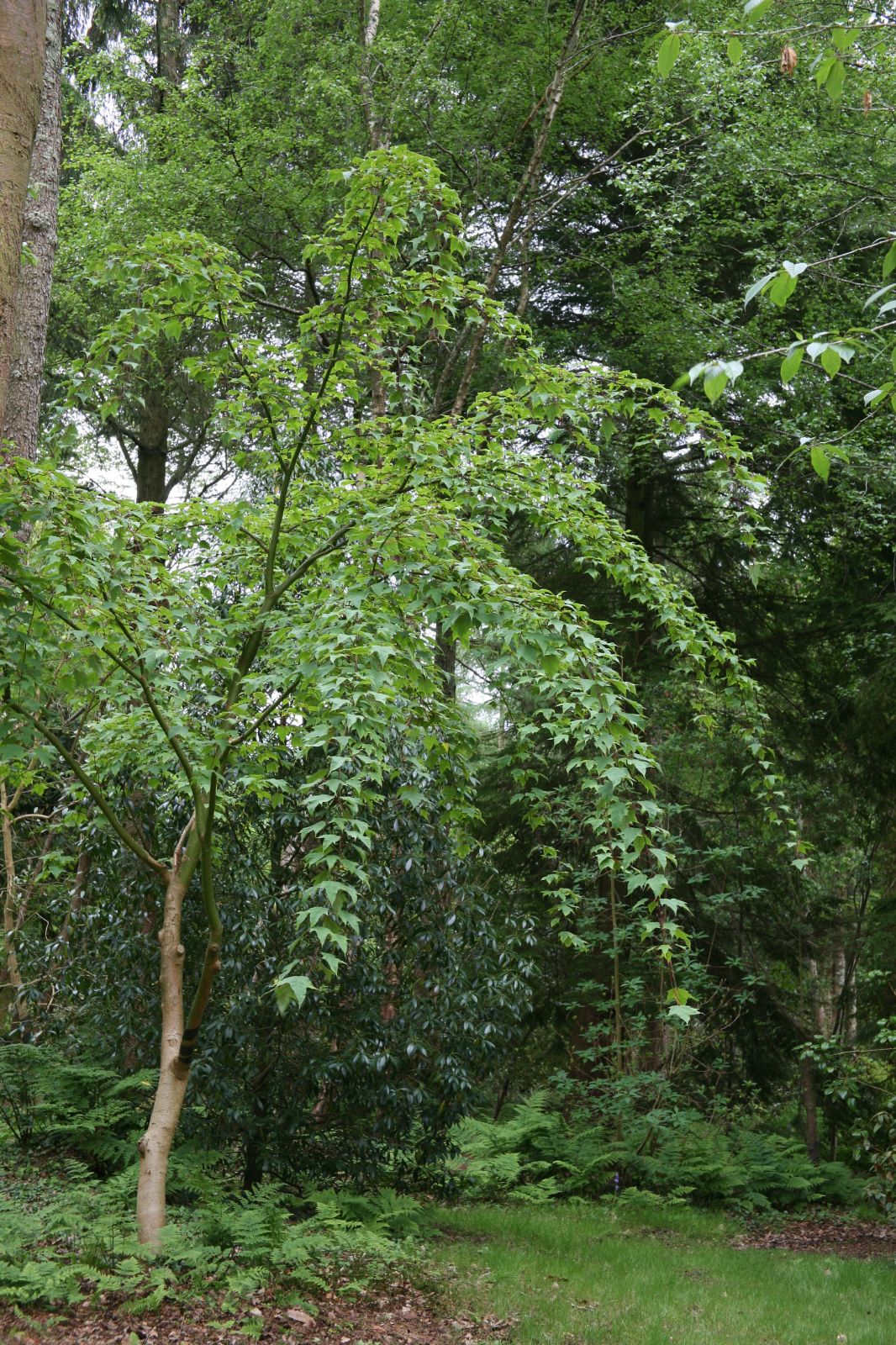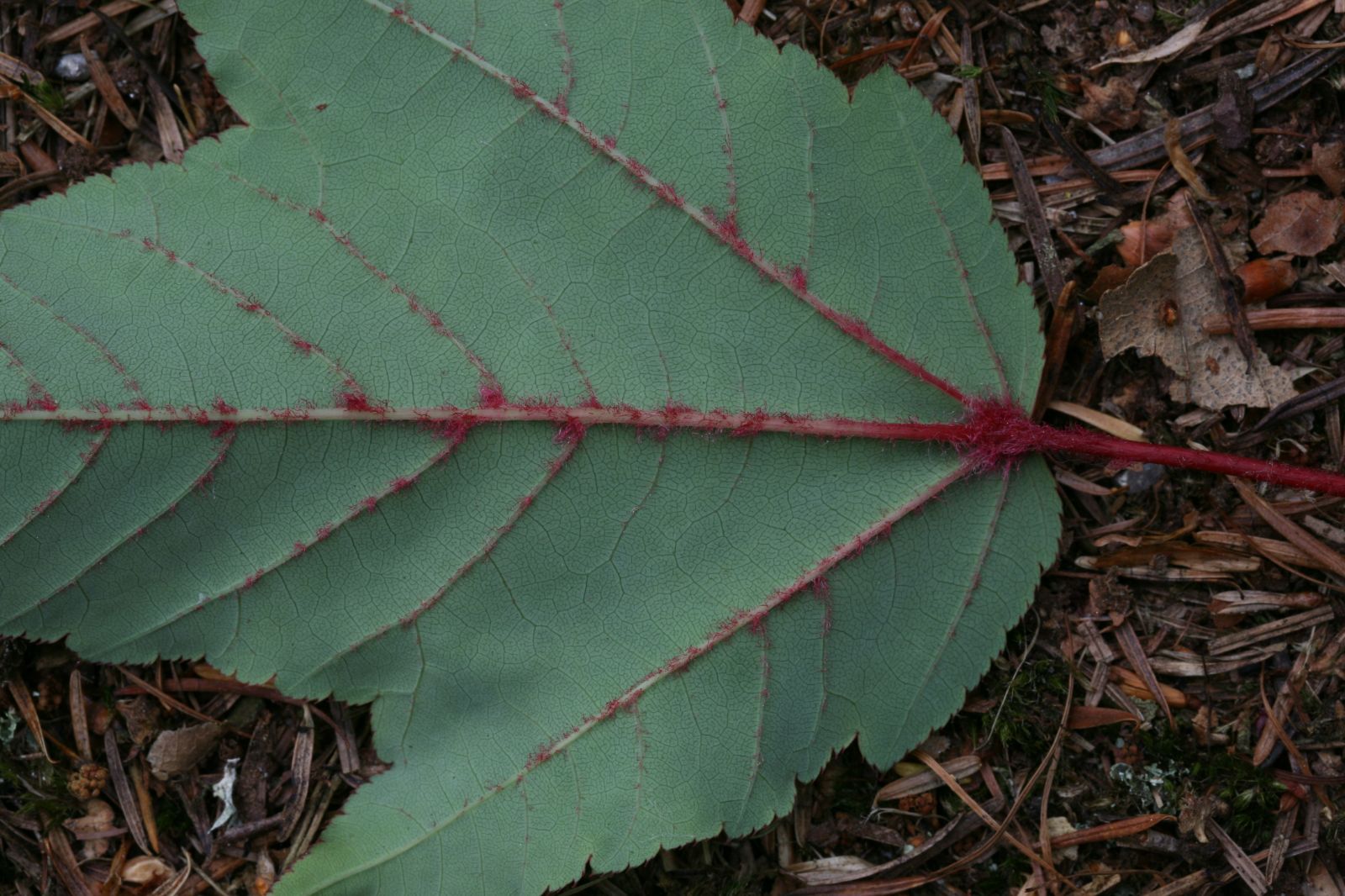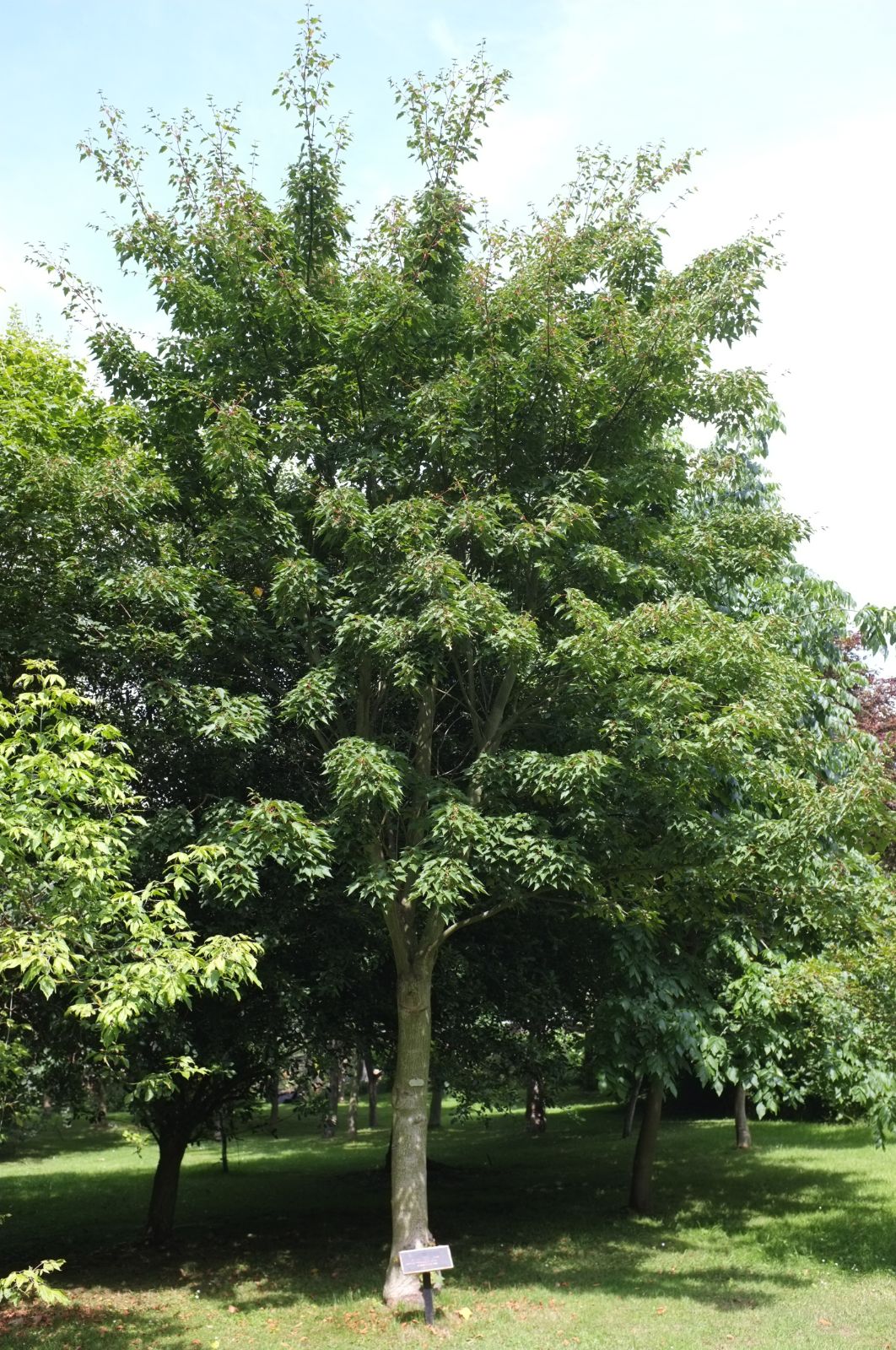Acer pectinatum
Sponsor
Kindly sponsored by
Lawrence Banks
Credits
Dan Crowley (2020)
Recommended citation
Crowley, D. (2020), 'Acer pectinatum' from the website Trees and Shrubs Online (treesandshrubsonline.
Genus
- Acer
- Sect. Macrantha
Common Names
- Wongka Maple
Synonyms
- Acer caudatum Wall., in part
- Acer pectinatum Wall., ex Nicholson, nom. illegit., nom. superfl.
- Acer pectinatum Wall., ex Pax
- Acer pectinatum Wall. nom. inval.
Infraspecifics
Other taxa in genus
- Acer acuminatum
- Acer amplum
- Acer argutum
- Acer barbinerve
- Acer buergerianum
- Acer caesium
- Acer calcaratum
- Acer campbellii
- Acer campestre
- Acer 'Candy Stripe'
- Acer capillipes
- Acer cappadocicum
- Acer carpinifolium
- Acer 'Cascade'
- Acer caudatum
- Acer ceriferum
- Acer chapaense
- Acer chienii
- Acer circinatum
- Acer cissifolium
- Acer × conspicuum
- Acer cordatum
- Acer coriaceifolium
- Acer × coriaceum
- Acer crataegifolium
- Acer davidii
- Acer diabolicum
- Acer distylum
- Acer divergens
- Acer duplicatoserratum
- Acer elegantulum
- Acer erianthum
- Acer 'Esk Flamingo'
- Acer fargesii
- Acer fenzelianum
- Acer flabellatum
- Acer forrestii
- Acer franchetii
- Acer × freemanii
- Acer fulvescens
- Acer 'Gimborn'
- Acer ginnala
- Acer glabrum
- Acer 'Gold Coin'
- Acer granatense
- Acer grandidentatum
- Acer griseum
- Acer heldreichii
- Acer henryi
- Acer × hillieri
- Acer hookeri
- Acer hyrcanum
- Acer japonicum
- Acer kawakamii
- Acer komarovii
- Acer laevigatum
- Acer laurinum
- Acer laxiflorum
- Acer lobelii
- Acer longipes
- Acer macrophyllum
- Acer mandshuricum
- Acer maximowiczianum
- Acer maximowiczii
- Acer metcalfii
- Acer miaotaiense
- Acer micranthum
- Acer 'Mindavi'
- Acer 'Minorient'
- Acer miyabei
- Acer miyabei × campestre
- Acer monspessulanum
- Acer morifolium
- Acer 'Mozart'
- Acer oblongum
- Acer obtusifolium
- Acer okamotoanum
- Acer oliverianum
- Acer opalus
- Acer orientale
- Acer palmatum
- Acer papilio
- Acer pauciflorum
- Acer pensylvanicum
- Acer pentaphyllum
- Acer pentapotamicum
- Acer pictum
- Acer pilosum
- Acer pinnatinervium
- Acer platanoides
- Acer platanoides × amplum
- Acer platanoides × truncatum
- Acer × pseudoheldreichii
- Acer pseudoplatanus
- Acer pseudosieboldianum
- Acer pubinerve
- Acer pycnanthum
- Acer rubescens
- Acer rubrum
- Acer rufinerve
- Acer saccharinum
- Acer saccharum
- Acer sempervirens
- Acer 'Serpentine'
- Acer serrulatum
- Acer shenkanense
- Acer sieboldianum
- Acer sikkimense
- Acer 'Silver Cardinal'
- Acer 'Silver Ghost'
- Acer sinense
- Acer sinopurpurascens
- Acer spicatum
- Acer stachyophyllum
- Acer taronense
- Acer tataricum
- Acer tegmentosum
- Acer tenellum
- Acer tetramerum
- Acer tibetense
- Acer tonkinense
- Acer triflorum
- Acer truncatum
- Acer tschonoskii
- Acer turkestanicum
- Acer tutcheri
- Acer ukurunduense
- Acer velutinum
- Acer wardii
- Acer 'White Tigress'
- Acer wilsonii
- Acer × zoeschense
A deciduous tree to 20 m in the wild. Bark dark green with pale stripes, soon turning brown with age. Branchlets glabrous, purplish-green. Buds stipitate, ovoid, with two pairs of valvate scales, purplish. Leaves suborbicular, base strongly cordate to subcordate, 3– or 5-lobed, 7–10 × 6–8 cm, central lobes ovate, apex caudate-acuminate, lateral lobes triangular, apex obtuse to caudate-acuminate, margins finely serrate, upper surface matt green, lower surface pale green, with reddish to rusty pubescence at least at first, persisting along veins; petiole 2–7 cm long, red, grooved, glabrous or rusty pubescent, at least at first; autumn colours yellow to orange. Inflorescence terminal, racemose, pendulous, 10–40 flowered, 6–8 cm long. Flowers purplish-green, 5-merous, pedicels slender, 0.5–0.7 cm long, sepals oblong, ~0.5 cm long, petals obovate, ~0.8 cm long, stamens 8, inserted outside the nectar disc. Samaras 1.3–1.8 cm long, wings spreading obtusely or more broadly. Flowering in May, after the leaves have emerged, fruiting in October. (van Gelderen, de Jong and Oterdoom 1994; Xu et al. 2008).
Distribution Bhutan Myanmar China Southern Xizang, north western Yunnan India Nepal
Habitat Temperate mixed forests between 2500 and 3700 m asl.
USDA Hardiness Zone 6-7
RHS Hardiness Rating H5
Conservation status Least concern (LC)
Taxonomic note The Acer pectinatum complex is one of the most debated areas in the genus Acer. It is broadly considered to include six named taxa, as well as another, as-yet unsatisfactorily characterised taxon introduced in recent years from northern Vietnam (also present in adjacent south east Yunnan). The six broadly accepted taxa are either treated as subspecies of A. pectinatum (e.g. van Gelderen et al. 1994), or else as a combination of five (closely related) species in their own right and one subspecies. The latter approach is the one taken by the Flora of China (Xu et al. 2008) and the one we have elected to follow here. In this approach the complex currently includes the species A. chienii, A. forrestii, A. laxiflorum, A. maximowiczii, together with A. pectinatum subsp. pectinatum itself and its subsp. taronense. Even in taking this approach the complex still contains several unresolved questions, including the distinct entity from northern Vietnam. These are expanded on in the various species accounts. The correctness and, if correct, the authorship of the name Acer pectinatum has also been disputed. It was originally named by Wallich (1831), though as a nomen nudum and while Nicholson (1881) validly published it in 1881, the inclusion of A. acuminatum as a synonym rendered it illegitimate. Consequently, Bean (1976a) considered that Pax (1886) was the first to validly publish the name in its current application. However, Bean overlooked the fact that if Nicolson’s name was validly published, Pax’s would be an illegitimate later homonym. Fortunately, Brandis (1874) had already legitimately published the name in 1874 with a very brief diagnosis and acceptance in his Index. While Xu et al. (2008) correctly stated that Nicholson’s publication is a nom. illeg and nom. superfl. they too overlooked the earlier, legitimate publication by Brandis (J. McNeill, pers. comms. 2020).
Whichever approach one takes to the treatment of the Acer pectinatum complex any discussion must begin by considering it in its widest sense. Living plants within the complex can be split in two by bark characters, with that of Acer forrestii, A. laxiflorum and A. maximowiczii remaining green after many years, while bark of the remaining taxa quickly turns brown, losing the snakebark effect, though they remain valuable from an ornamental perspective. Beyond this broad division separation becomes increasingly challenging.
A. chienii can be separated from A. pectinatum sensu Xu et al. (2008) by its lobes, where present, initiating from the upper half of the leaf. In A. pectinatum, these are always present and derive from the lower half. Distinguishing the subspecies taronense from the type can be somewhat tricky, with the most useful character seemingly the presence or absence of pubescence along the petiole, the nominate subspecies being glabrous in this regard. Both taxa within A. pectinatum sensu Xu et al. (2008) are distinctly pubescent on their leaf undersides, at least along veins and often throughout at first, if not later. Xu et al. (2008) describe subsp. taronense as the more hirsute of the two.
The typical subspecies was observed as a common forest tree in parts of Nepal by Roy Lancaster (Lancaster 1981), who, as part of the team of Beer, Lancaster and Morris (BL & M) also introduced seed of this species under numbers 18 and 35. Whether or not the UK and Ireland Champion, standing at 14.5 m in 2014 (The Tree Register 2019) at Westonbirt, Gloucestershire, was grown from this source can only be speculated. SCHL 2247, also from Nepal, grows at the Yorkshire Arboretum and measured 9 m tall in 2009 (The Tree Register 2019).
The as yet unsatisfactorily characterised taxon within the complex is the snakebark introduced from Fan Si Pan, northern Vietnam, in recent years, fast becoming the most represented member of the complex in cultivation. The name and identification of this material has become more confused than most, with several collections introduced under the name of A. campbellii var. fansipanense. This is confusing particularly because A. campbellii belongs to section Palmata, rather than section Macrantha. This error can be traced back to Gagnepain, who described the taxon, though with the slightly different spelling, fantsipanense (Gagnepain 1948). Study of the type material at the Institute of Tropical Biology Herbarium in Ho Chi Min City revealed that while Gagnepain attributed this taxon to A. campbellii the material his description referred to in fact belongs to section Macrantha (Crowley 2018). However, the publication of this name was invalid anyway, on account of the protologue being written in French rather than Latin (Gagnepain 1948). It appears that those who later used the name A. campbellii var. fansipanense for their collections were likely following Pham (1992) whose documentation of the Vietnamese flora includes the description and illustration of this material using this variant spelling. Though it has also been observed growing as A. fansipansensis, this combination has not been published. Now available in the trade as A. pectinatum subsp. pectinatum (Crûg Farm Plants 2018), at this point A. aff. pectinatum is more appropriate. While it may be included within this species, its characters fit neither of the subspecies as circumscribed by Xu et al. (2008) and it requires a name. It differs from both of these in its often more strongly 5-lobed leaves, which are largely glabrous except for tufts in its basal axils.
Fine examples of this Vietnamese entity can be seen at Hergest Croft, Herefordshire, at Westonbirt, Gloucestershire, and at Tregrehan, Cornwall. It forms a stunning tree of upright form with bronze new growth and yellow autumn colour. Collections include those made by Sue and Bleddyn Wynn Jones and Dan Hinkley, such as BSWJ 8270 and HWJ 569 (both from the same tree near a campsite on Fan Si Pan at 2700 m) (Grimshaw & Bayton 2009), as well as Keith Rushforth collections under KR 3012 and KR 3031. This entity also occurs over the Chinese border in southern Yunnan. More recent collections in section Macrantha from this region, made under the VIET code including numbers 306, 370 and 481, and growing at collections including Kew and Westonbirt, should not be confused with this taxon, as these represent an entity closer to A. davidii than to A. pectinatum.
subsp. taronense (Handel-Mazzetti) A. E. Murray
Synonyms
Acer taronense Handel-Mazzetti
Subsp. taronense has three- or five-lobed leaves, with conspicuously pubescent undersides. It differs from subsp. pectinatum in being more pubescent on the leaf undersides and also in having pubescent petioles (Xu et al. 2008).
Distribution
- Bhutan
- China – Western Sichuan, Eastern Xizang, North western Yunnan
- India
RHS Hardiness Rating: H5
USDA Hardiness Zone: 6-7
Originally considered a species, and treated as such by Bean (1976a), subsp. taronense was described by French botanist Handel-Mazetti in 1924 from collections he made from the valley of the River Taron, a tributary of the Irrawaddy in northern Myanmar (Bean 1976a). It was also introduced in the same year from the Chinese-Myanmar border by George Forrest, under F 24264 (van Gelderen et al. 1994). Originally distributed as A. rufinerve and historically grown under this name (Bean 1976a), a plant of it at Caerhays, Cornwall is suspected to be the source of younger material present in European collections in the 1990s (van Gelderen et al. 1994). An extraordinary example at Tregrehan, Cornwall, has distinctly pink pubescence on the leaf undersides and petioles. A number of plants of Wilson 4108 are found in collections under this name, though are in fact referable to A. laxiflorum. See the account of that species for further information.

